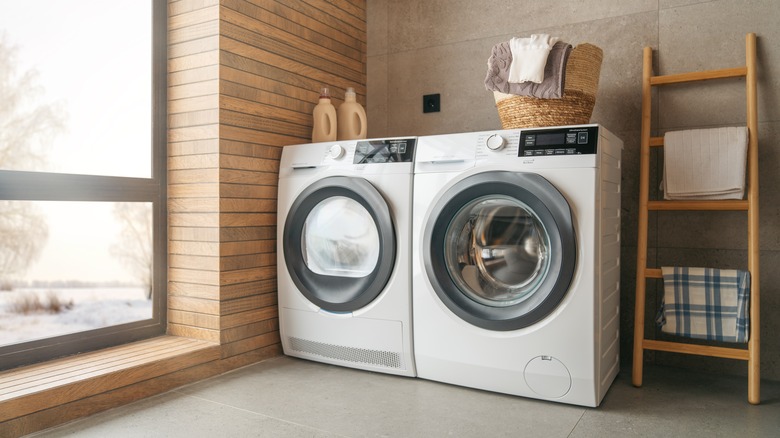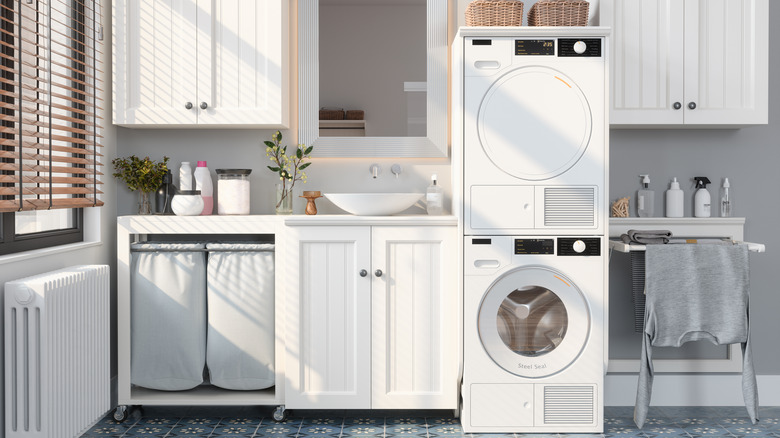How Much Space To Set Aside For A New Dryer (& Tips To Maximize Functionality)
What do you do after noticing signs your dryer is too old? You heed the warning and follow the expert tips when shopping for a new dryer. While you can choose the device's size and load capacity based on your family size and requirements, these aren't the only important decisions you need to make. You must also ensure the designated spot is big enough to house the dryer with a few inches to spare. This will promote air circulation around the unit so it doesn't overheat and malfunction.
Although you'll be tempted to eyeball the dimensions, resist the temptation to avoid squishing your brand-new device in a corner it doesn't fit. The easiest way to determine the amount of space your new dryer needs is to learn the device's measurements. Then, use a tape measure and calculate the distance between the wall and the washer to ascertain whether the space you had in mind is practically viable. Don't forget to consider the bubble, aka clearance, needed around the unit to maximize its functionality. That being said, how much space should you set aside for your new dryer?
How much space do you need around a clothes dryer?
As a rule of thumb, leave a gap of 4 to 6 inches between your brand-new dryer and the wall. This will improve ventilation and ensure there's enough space for the hoses. However, the clearance space around the device depends on your laundry room setup. To elaborate, if you're placing the device beside your washing machine, leave a gap of at least 1 inch between the two units. Additionally, clear 1 inch of space on each side of the device. Maintaining this bubble will allow it to vibrate in peace and give your ears some much-needed relief from the accompanying sounds.
Further, adding a pedestal beneath your washer and dryer will add around 15 inches of height to the units. So, vertical space is important to avoid damaging the tops of the devices. Contrastingly, if your dryer is top-loading, give it a clearance of 2 feet (at a minimum) to facilitate easy lid movement. Don't forget to leave around 3 to 4 feet of buffer space in front of the unit to pop in and take out your washed clothes with ease. Alternatively, if you plan on housing the washer-dryer combo inside a closet or tucking them in an alcove, there must be two clear openings for airflow and an area of 72 square inches. When using your garage as a laundry room, put the dryer on a platform 18 inches off the floor for heat radiation.
Space needed for stackable washer and dryer units
If your laundry room isn't wide enough to comfortably accommodate a washer and dryer side-by-side, stacking the latter on top of the former is the best way to make the most out of a small laundry room or bathroom. There's just one tiny detail you need to consider: vertical space. Since regular units are usually 39 inches tall each, they'll be a minimum of 78 inches high when stacked. So, ensure your laundry room's ceiling is at least 80 inches tall — 78 inches for the units and 2 inches of clearance space.
The dimensions for the sides and back still apply. Remember, only stack your washer and dryer if they're the same size. Moreover, don't forget to invest in a dedicated stacking kit. Doing so will create a tiny gap between the two units, improving airflow and evenly dispersing the dryer's load. These kits also stabilize the dryer by absorbing its vibrations and preventing it from skidding off the washer. For extra precaution, use a level to align the washer with the ground before putting the dryer on top.


